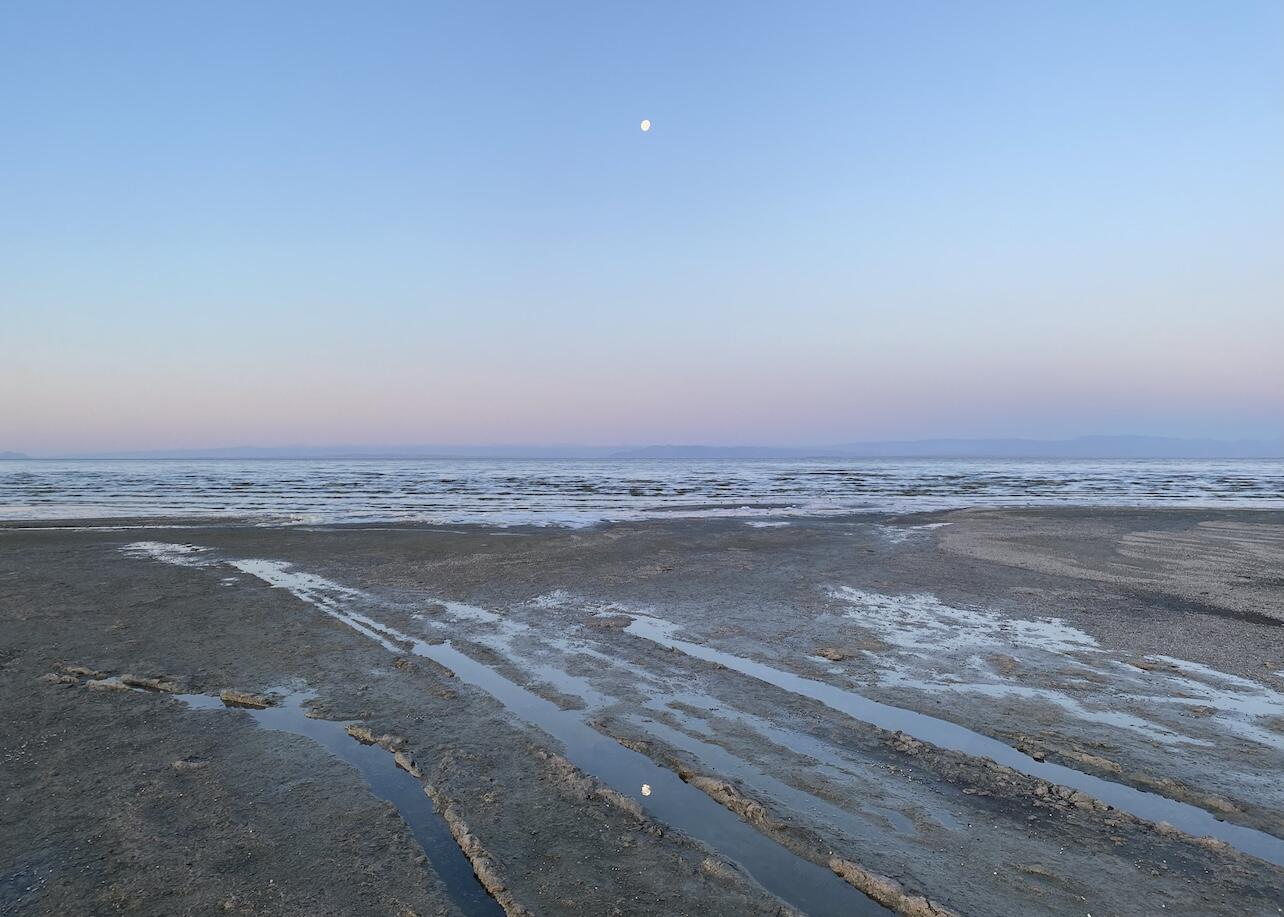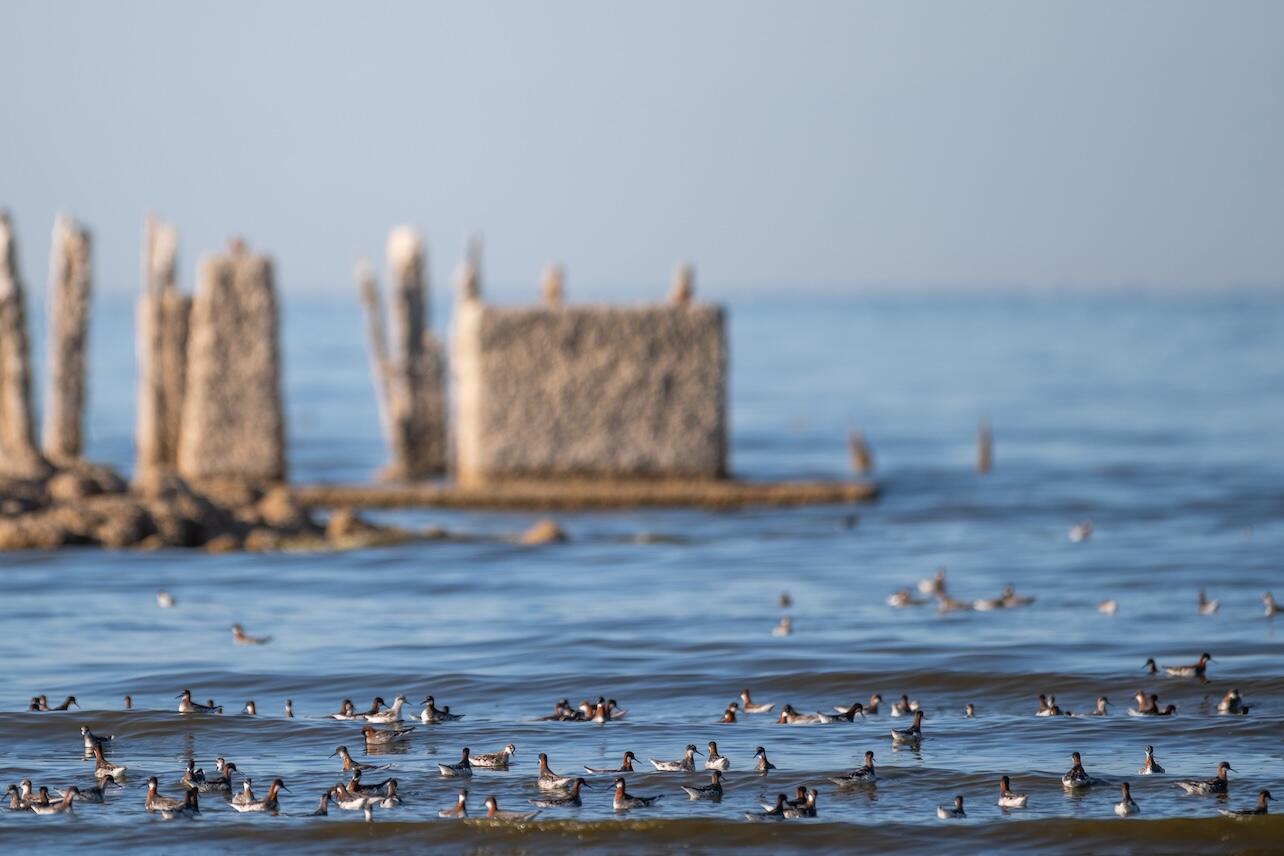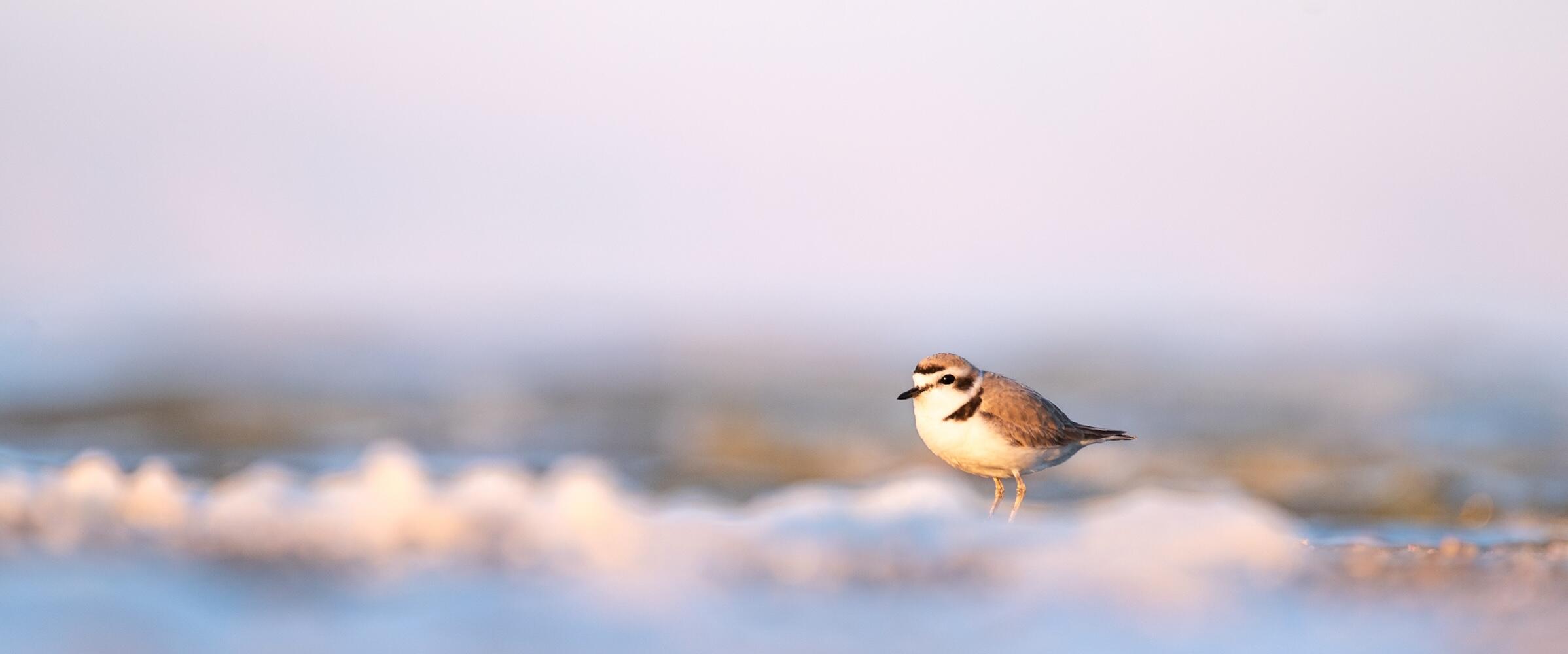An early morning, for the love of shorebirds
Counting shorebirds during spring migration in the desert means waking up before dawn. Navigating in the dark, I blearily filled my purple water bottle adorned with a Plover Lover sticker, before setting out on a 45-minute drive from Coachella to meet my survey partner at the Salton Sea. In late April, the mountains surrounding the Sea before sunrise are gorgeous shades of purple, while the Belt of Venus paints the sky with brilliant layers of blue and pink. This color palette—whether at dawn or dusk—has always imbued me with a sense of calm and steady energy.

By 6am, I was basking in the early morning light at Niland Boat Marina, the starting point of our survey section, towards the northeast end of the 110-mile-long Salton Sea. My survey partner, Frank DiMartino from Ventura, and I were there to help gather important data for the Intermountain West Shorebird Survey, identifying and tallying the thousands of shorebirds migrating through the saline lake.
Counting our feathered friends across this vast area larger than Lake Tahoe requires tremendous coordination, led by Camila Bautista, Salton Sea Program Manager at Audubon California, in partnership with the California Department of Fish and Wildlife, Point Blue Conservation Science, and the U.S. Fish and Wildlife Service. Equipped with binoculars and GIS maps, these efficient and organized surveys are conducted by a motley crew of biologists, environmental scientists, and volunteer birders, working on foot and by airboat.
A Shorebirder's Paradise (Minus the Luxury, Plus the Adventure)
For Frank and me, along with our neighboring foot teams, this meant walking 4 miles across the playa’s special blend of pulverized fish bones and barnacles, while carrying heavy optics gear. But the promise of seeing tons of shorebirds kept me from being discouraged by the unsteady ground under our feet. After all, it was less muddy than I’d experienced during the December Pacific Flyway Shorebird Survey with fellow Plover Lover Andrea Jones (Audubon California’s Senior Conservation Director). The desert sun and heat would be the main seasonal challenges this time. Thankfully, with our early morning start we were able to finish before the harsh and high noon sun, all while successfully counting 3,624 shorebirds!
Among them was a favorite bird species of mine, the Snowy Plover. One of the first adults we spotted had a clutch of adorable chicks, some barely bigger than a dollar coin. Our team’s bird count also featured several Calidris sandpipers—Sanderling, Western Sandpiper, Least Sandpiper, and Dunlin. And let's not forget the other member of that Charadrius crew that showed up that day! Snowy Plovers graciously (sometimes aggressively) shared part of their breeding territory with traveling Semipalmated Plovers, who were on their way up to northern Canada and Alaska.

As we scanned the horizon, we couldn't help but marvel at over 2,300 Red-necked Phalaropes, spinning frantically in the water to coax invertebrates to the surface for a quick snack. These phalaropes were fueling up for the next leg of their journey to the Arctic tundra, after wintering in waters south of the equator. And while not as abundant as the more than 1000 Western Sandpipers we calculated, we were delighted to also spot some White-faced Ibis, Black-necked Stilt, and Marbled Godwit.

A Changing Sea and Why It Counts
Over millions of years, shorebirds have evolved to navigate hemispheres —traversing staggering distances with endurance humans can only dream of—and complete their lifecycles. However, while these birds are adaptable, they don’t have the luxury of booking any available motel room and grabbing a bag of chips from the local convenience store when they’re hungry and sleep-deprived during their travels. Instead, they have to rely on a network of interior wetlands and saline lakes for the specific food and space they require to complete their journeys.
The Salton Sea is a critical part of this network of oases and is being studied as part of two major surveys: the Intermountain West Shorebird Survey (IMWSS), spanning over 200 sites across 11 states, and the Pacific Flyway Shorebird Survey, across 13 countries. By conducting regional surveys throughout the seasons, we can compare our data with historic numbers and better map out the various factors that influence shorebird distribution. The increased salinity and shallow water habitat (due to a shrinking sea) of this unique body of water, coupled with elevated invertebrate and biofilm availability, could be helping some species of shorebirds thrive in the area, while other water birds like pelicans and cormorants have headed elsewhere as their previous food source of fish has declined.
Based on preliminary results from last year (we counted around a quarter million shorebirds during peak migration), the Salton Sea is providing tens of thousands of shorebirds with precious space to rest and refuel. As the Sea changes, tracking changes in these bird populations will help us understand what the future could look like for conservation, for restoration, and even for public access for local communities.

Join Our Next Survey
This level of on-the-ground community science and large-scale monitoring is nearly impossible without volunteer support. If you're a fan of adventure and shorebirds, enjoy geeking out over the nuances of Calidris sandpipers and other bird species in the Charadriiformes order, and have the desire to help researchers understand ecosystem changes at the Salton Sea and across the Pacific Flyway, consider joining our next survey.
Our ongoing efforts thrive on local collaboration with the community and partners. For upcoming survey opportunities, reach out to Camila Bautista at camila.bautista@audubon.org.










